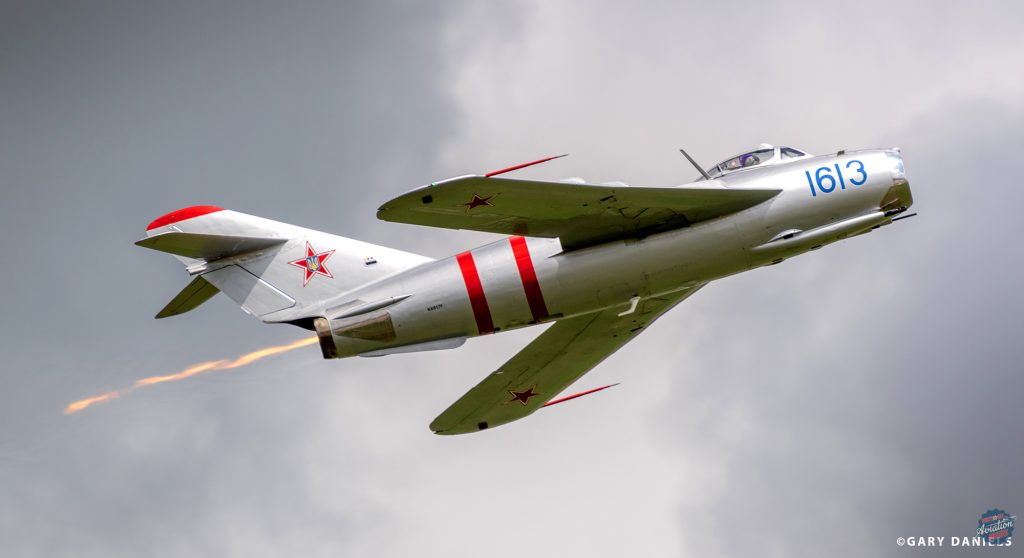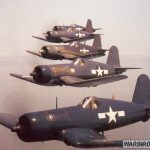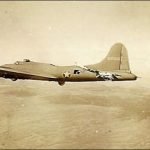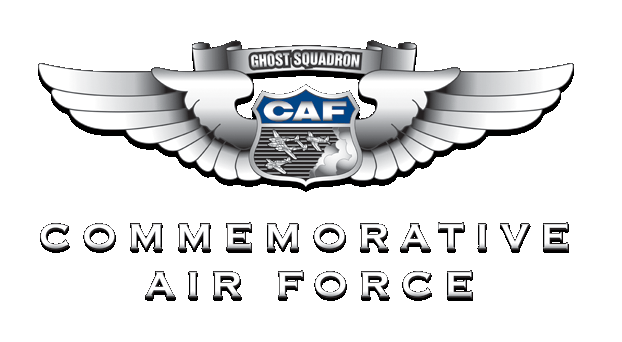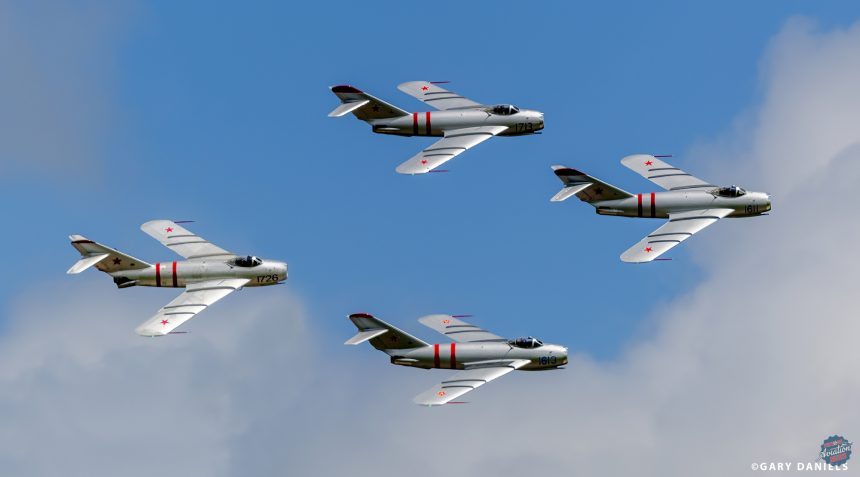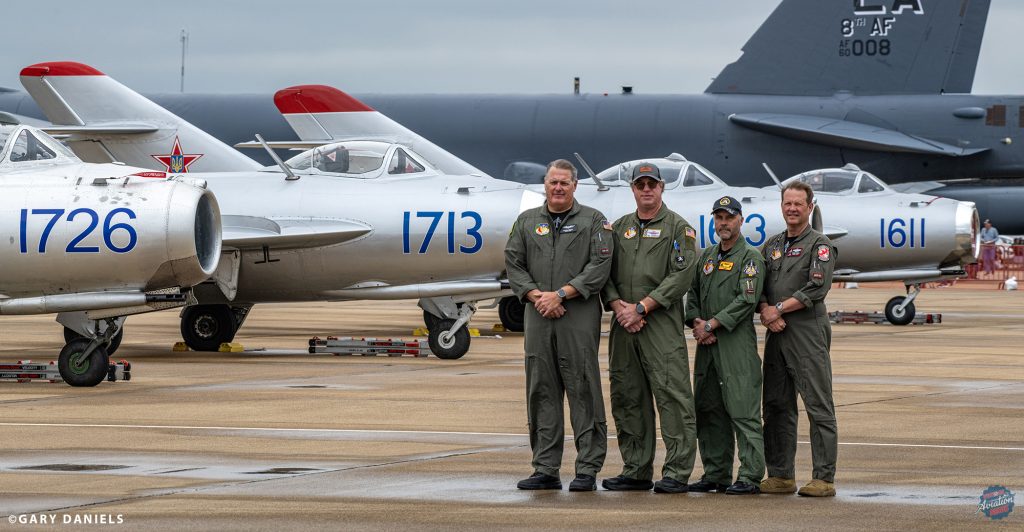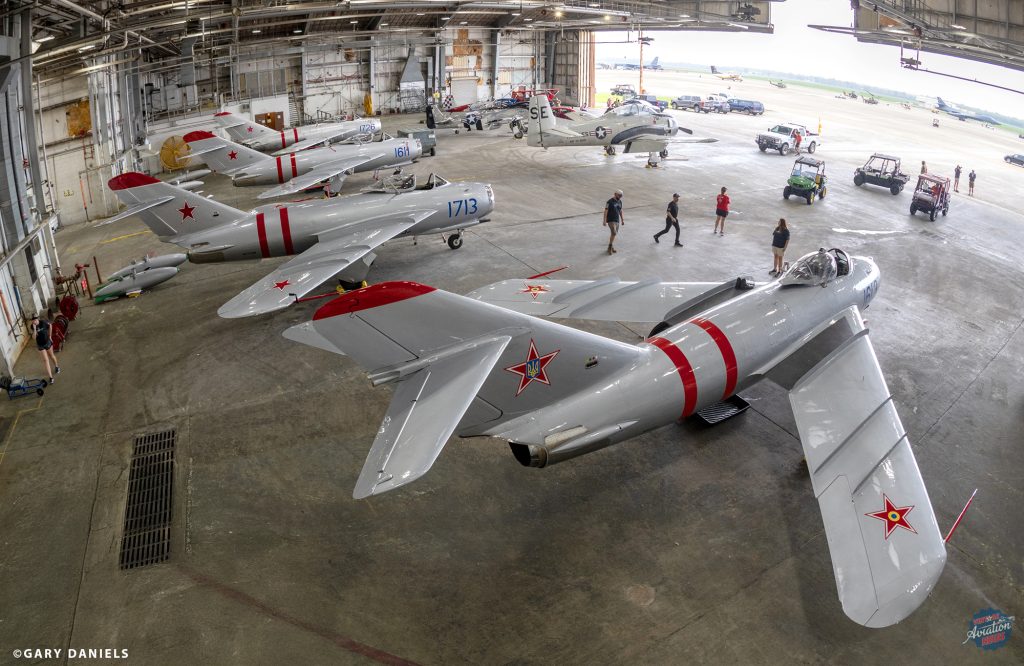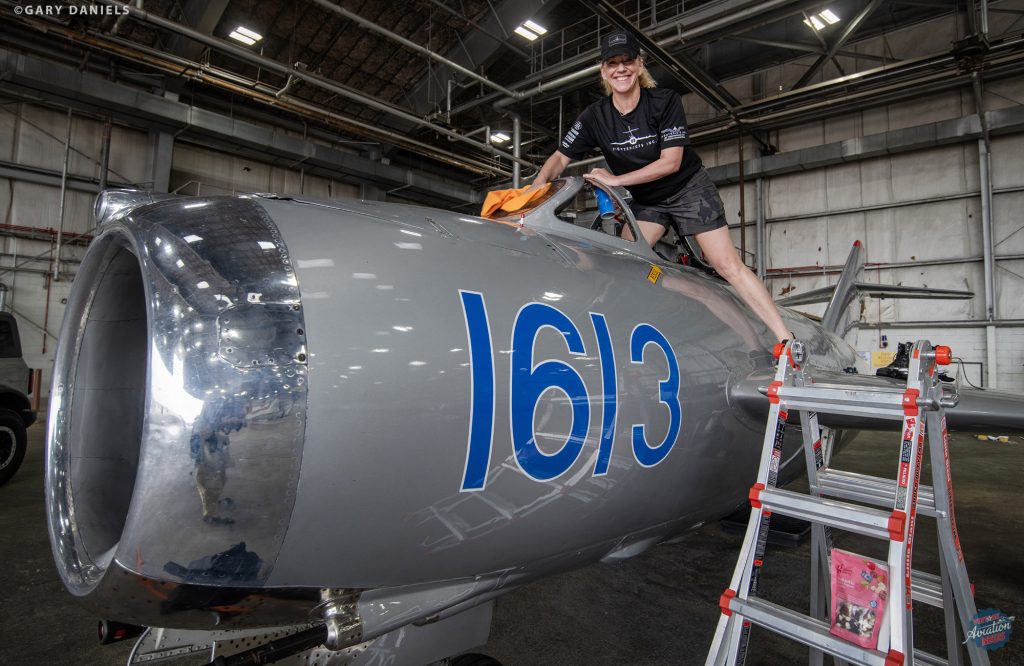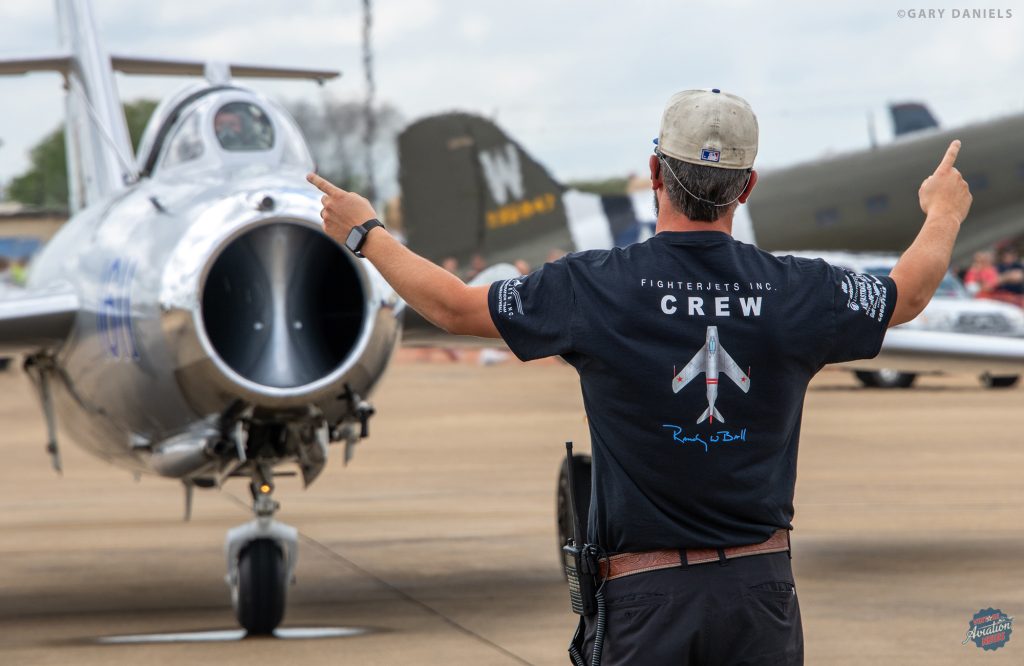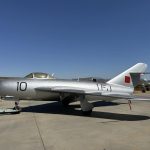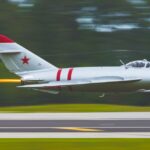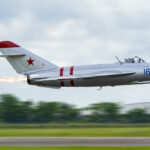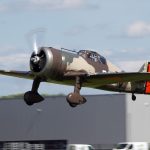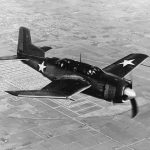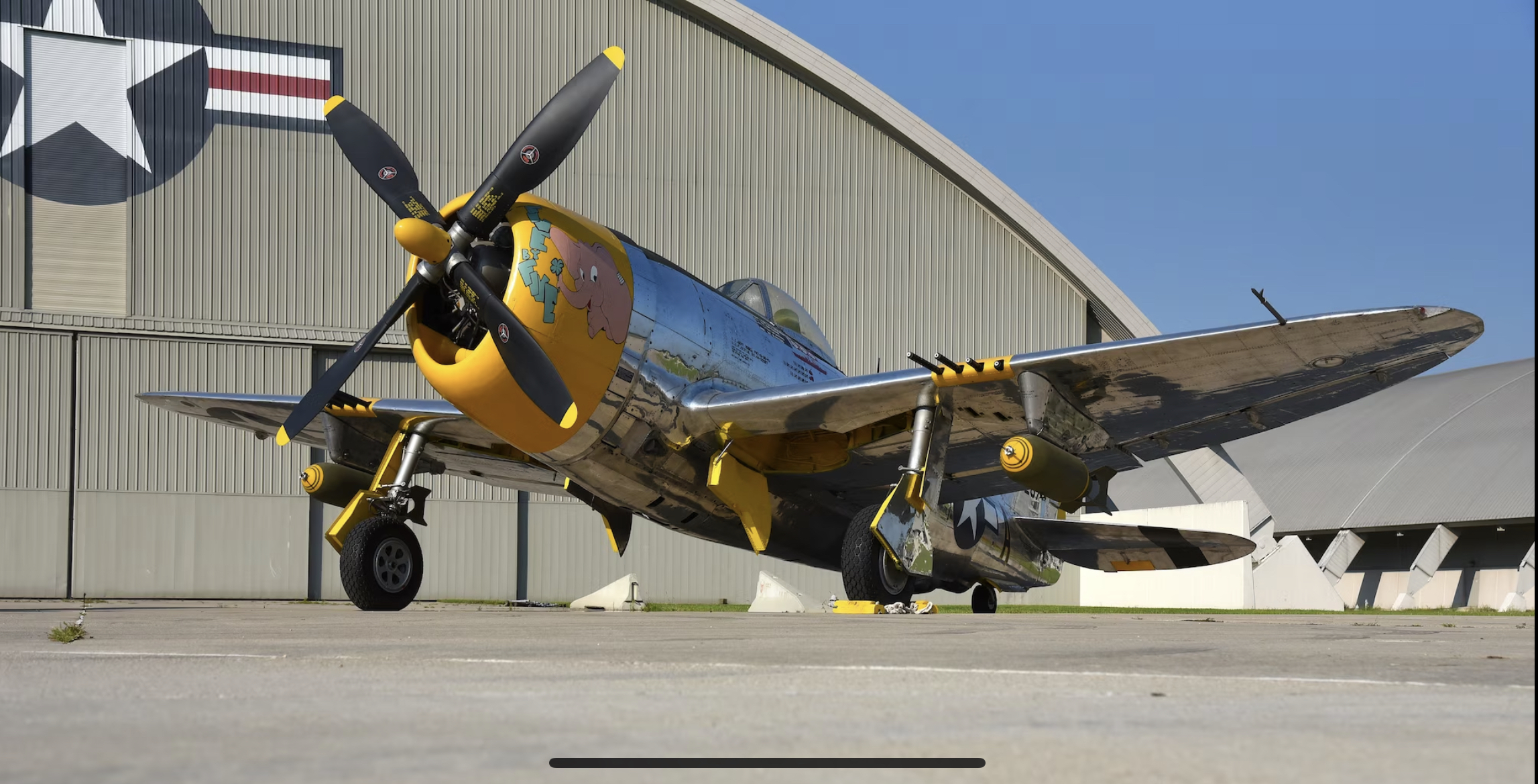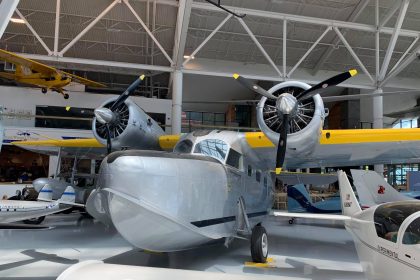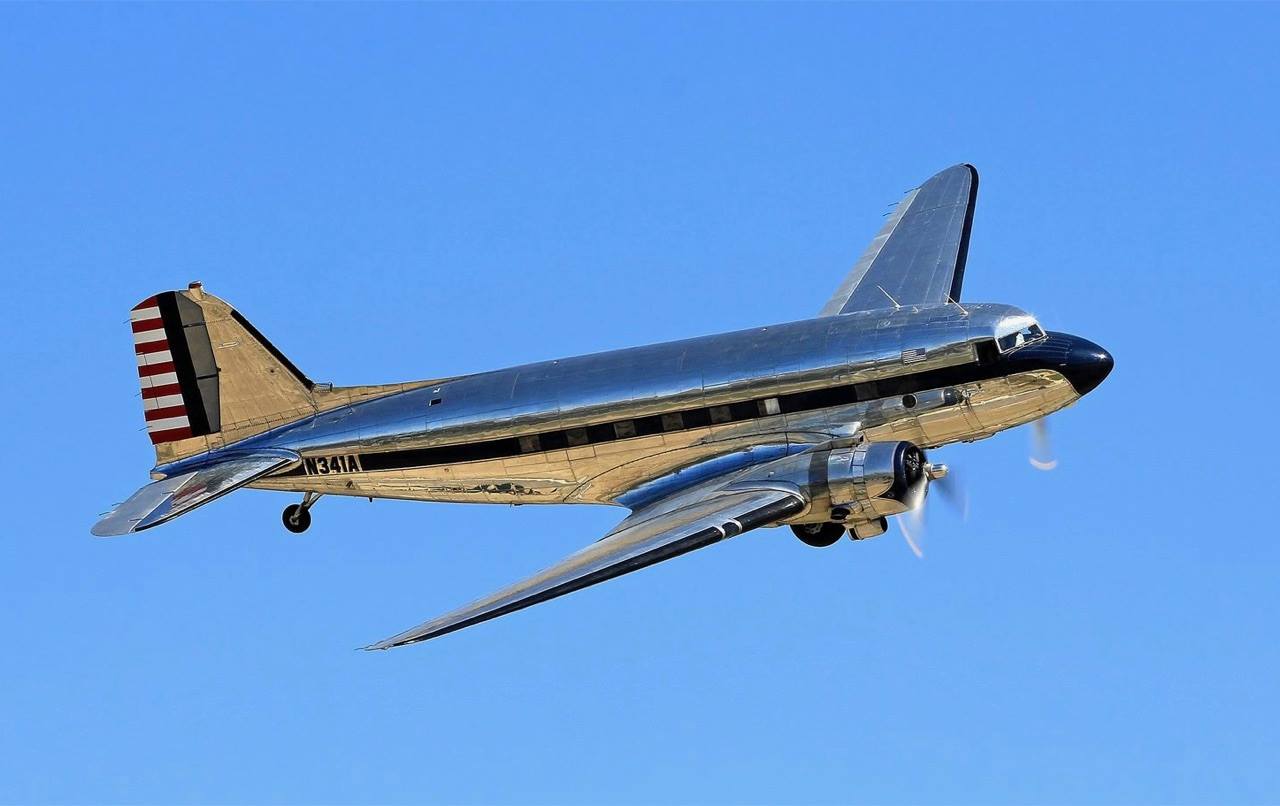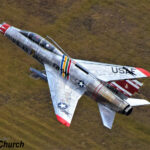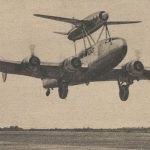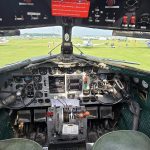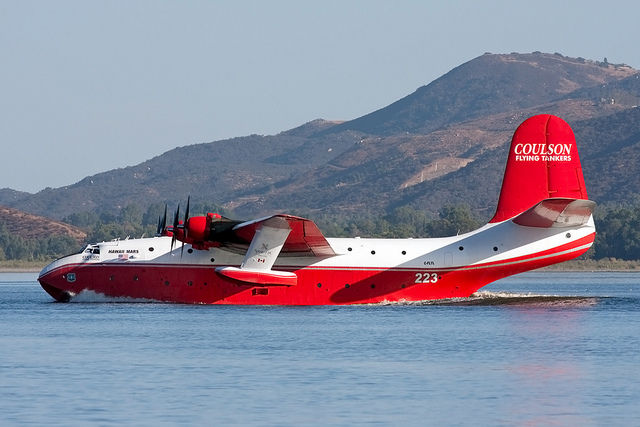North American airshow history was made on March 29-30, 2025, when a team of four MiG-17F Frescos performed at the Defenders of Liberty Airshow at Barksdale Air Force Base in Bossier City, Louisiana. Long-time MiG airshow performer, Randy Ball, exclaimed after the history-making flights, “I acquired my first MiG in 1994 and have flown airshows for three decades in MiGs, but I never thought there would ever be a team of four MiGs flying at a US airshow. This is nothing short of surreal!” In 2023, Ball also led the first team of three MiG-17Fs at the Barksdale AFB airshow.
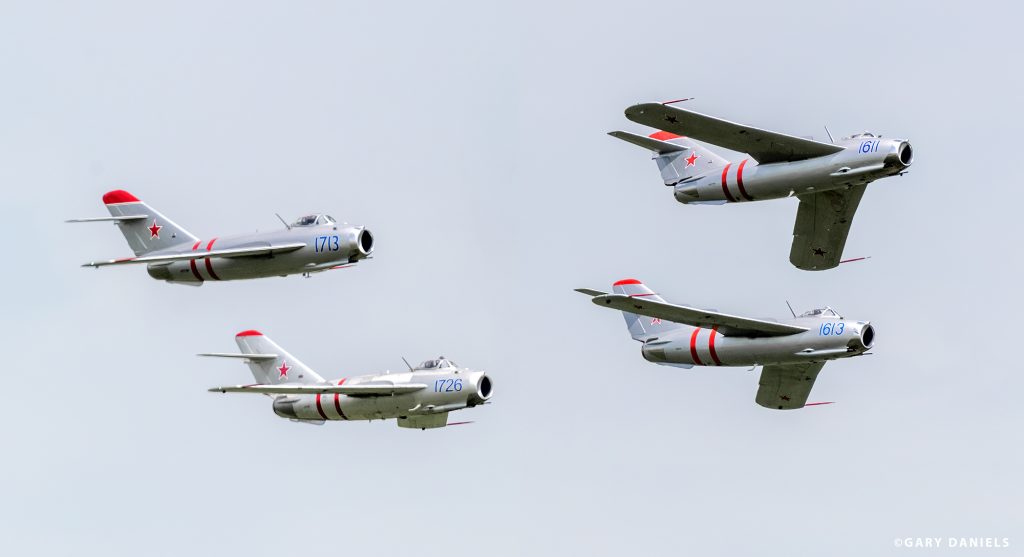
For Ball, the Barksdale AFB airshow holds a special place in his aviation and airshow journey. In 1988, Ball flew the A-26 ‘Spirit of Waco’ (now ‘Night Mission’) at the Barksdale AFB airshow. He flew his now-famous MiG-17F 1611 at the airshow for the first time in 1999. Since then, he has missed performing in only two Barksdale AFB airshows. 2025 marks Ball’s 35th year performing, and he is the longest-running jet performer in airshow history. He has logged more than 2000 hours in the cockpit of a MiG. Ball elaborated, “Think about how long it has taken me to log 2000 hours. My average airshow flight time is 12-to-14 minutes. That is hundreds and hundreds of very short flights with 8g sustained turns and 650mph passes with afterburner just feet over the runway!” In November 2024, at the Jacksonville, Florida airshow, Ball flew his 1800th MiG-17F airshow performance.
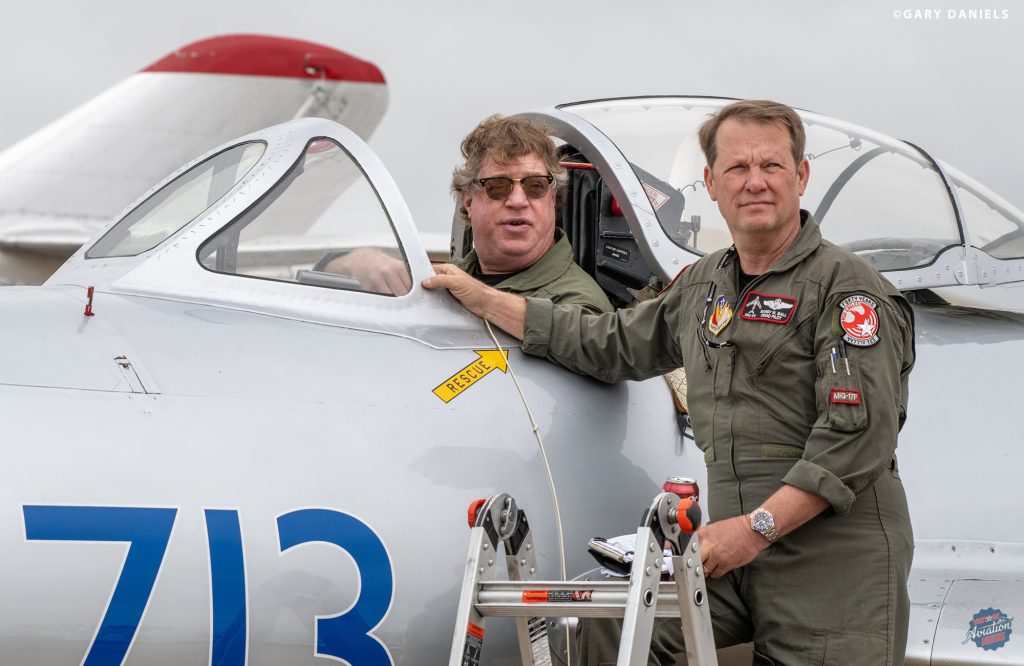
Ball’s 1959 MiG-17F Fresco (Fresco was NATO’s code name for the Mikoyan-Gurevich MiG-17) is a Polish-built WSK-Mielec Lim-5. He bought the airframe directly from the Polish Air Force in 1994 and began a detailed restoration through his company, FIGHTERJETS INC., which he founded in 1995. Airshow fans today are very familiar with this striking silver MiG with 1611 painted on the nose. But what makes 1611 even more unique is that it has its original cannons. Ball was able to import the two-23mm cannons and one-37mm cannon with the airframe. 1611 is the only MiG flying in the US with its Soviet weapons on board.
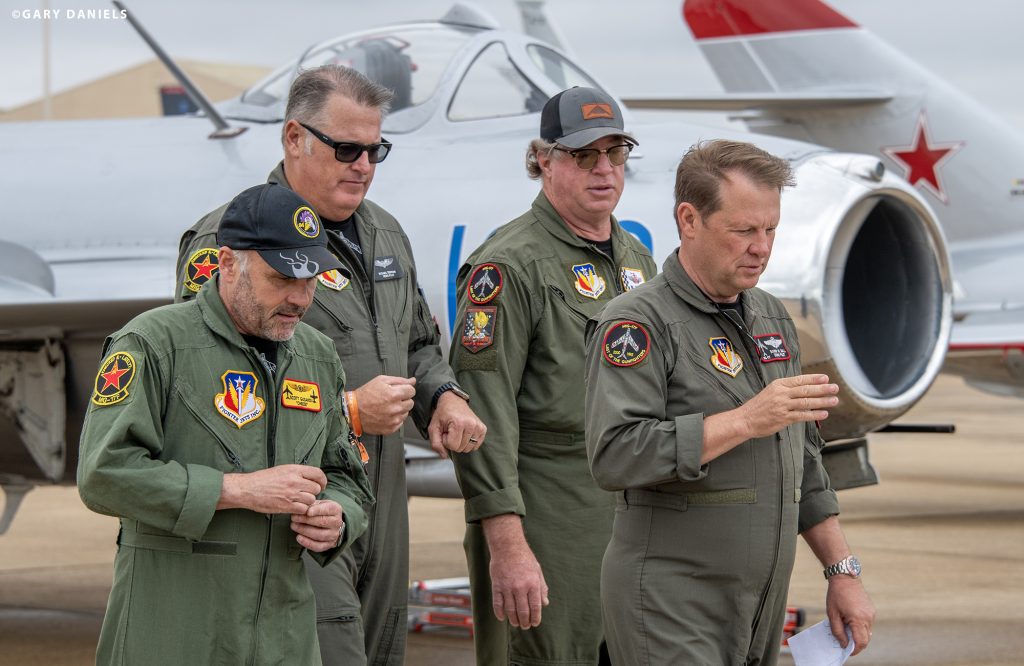
In 2008, Ball and his close friend Glenn Smith acquired a 1960 MiG-17F/Lim-5. During restoration, it was discovered that the airframe was only one serial number and only seven days apart in production from 1611. Plus, it had served in the same squadron in Europe as 1611. With this history uncovered, Ball painted the second MiG the exact same as 1611, except with 1613 on the nose. Now there were two matching MiG-17Fs, and the first airshow to have the honor of having two MiGs perform was the 2008 Thunder Over Cedar Creek Airshow at Cedar Creek Lake, southeast of Dallas, Texas.
Bill Culberson is the owner of Red Star Aero Services, which is based in Mobile, Alabama. Culberson is a Soviet military aircraft aficionado. He was hooked on Russian aviation airpower as a kid since his father was a USAF fighter pilot during the Cold War. Today, Culberson’s business restores Soviet-era aircraft. In his hangar are MiG-15s, ‘17s, and ‘21s. There is even a Mil Mi-2 helicopter he flies around Mobile when he needs a change of pace. Culberson had typed in the MiG-15 and liked how the aircraft flew and performed. So, in 2016, Culberson acquired an airworthy 1960 MiG-17F/Lim-5 with the goal of restoring it into a world-class airshow MiG. It was during this time that he met Randy Ball. When it was time to paint the MiG, Culberson decided to paint it like Ball’s 1611 and 1613, except with 1713 on the nose. Now, there were three matching MiG-17s making history flying together at the 2020 Thunder Over Cedar Creek Airshow. Culberson also acquired 1613 from Ball in 2019, which added to his extensive Soviet Cold War aircraft collection.
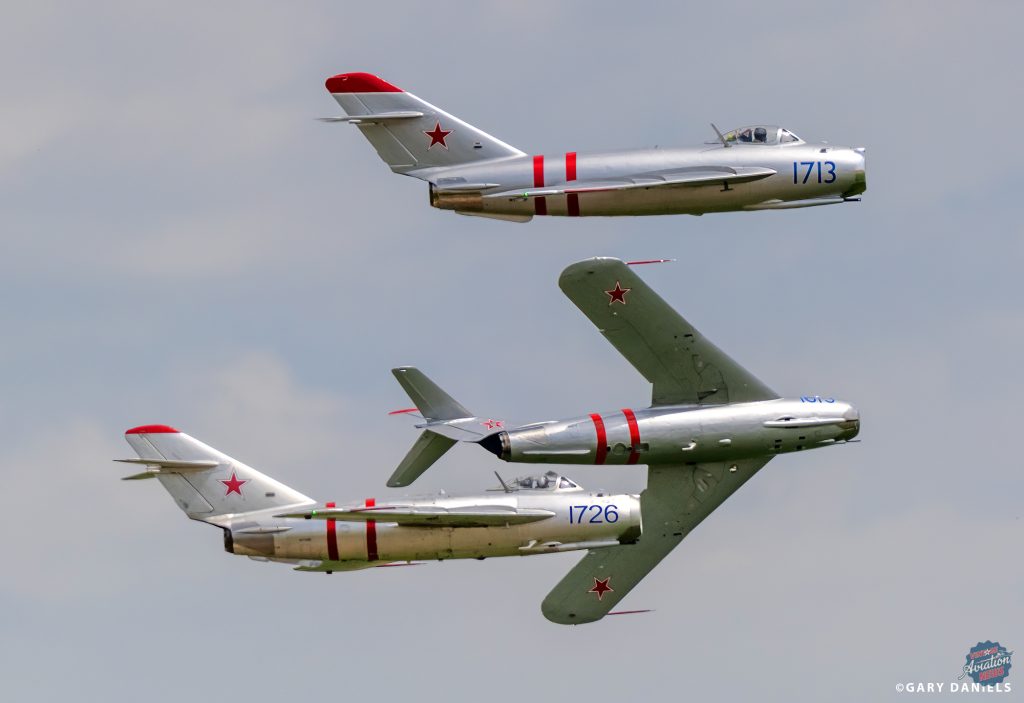
In 2018, Culberson purchased a 1960 MiG-17F/Lim-5 (1726) from an aviation museum in Oregon that was closing. Culberson bought the airframe sight unseen, thinking it would be a good parts aircraft. When it arrived at his Mobile facility, he found the aircraft to be in very good condition. It even had a low-time engine and afterburner with excellent records. Enter Mike Terfehr, owner of 45 North Aviation based in Traverse City, Michigan. Terfehr had wanted to acquire a MiG since watching Culberson fly during the EAA Warbirds Jet Day at Oshkosh. Culberson agreed to sell 1726 to Terfehr in 2019, and they worked together on the restoration. Culberson said, “We’ve restored the MiG from the ground up, and we’re pretty proud of it.” Terfehr continued, “I love working on and flying the MiG. It’s a dream to fly.” 1726 has an anodized aluminum finish that gives it the patina of having flown a hundred missions from a forward airbase. Terfehr isn’t sure he wants to coat it in shiny metallic silver paint like 1611, 1613, and 1713. Terfehr said, “I’m torn about whether to paint it or leave the exterior in its original condition. It looks amazing to me as it is!”
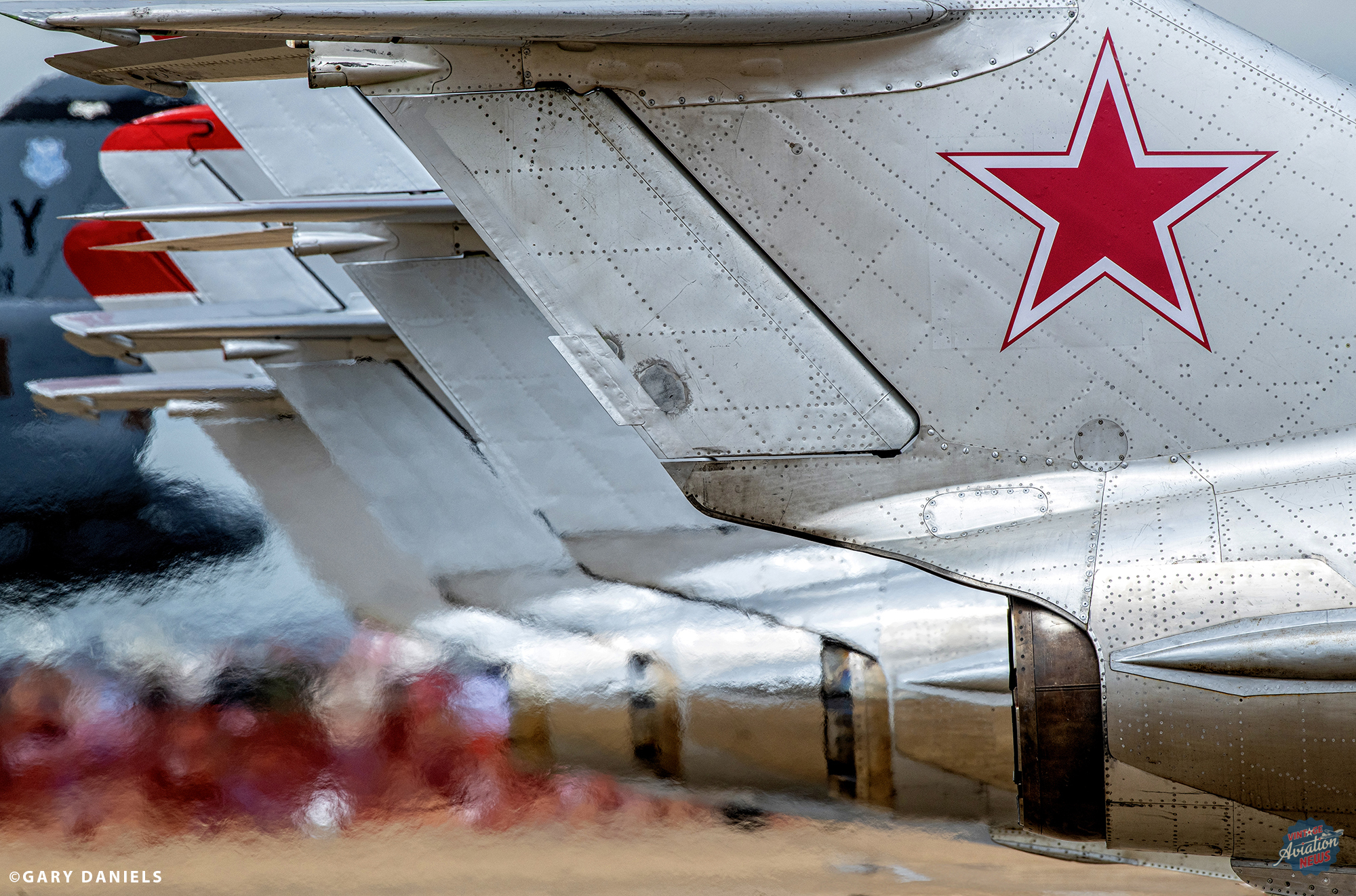
With Ball’s 1611, Culberson’s 1613 and 1713, and Terfehr’s 1726, there were now four MiG-17s available for the upcoming Barksdale airshow. With four MiGs ready to go, but only three pilots to fly them, Scott Gusakov was brought into the loop. Gusakov owns a business rebuilding Ukrainian Ivchenko AI-25TL jet engines for imported Czech Aero L-39 Albatros jet trainers. Gusakov owns an L-39 named Tumbling Goose and raced it at the 2023 Reno Air Races, winning Silver in the class. But that wasn’t enough for him. “I wanted to fly a swept-wing, afterburning fighter jet…” Gusakov remarked, “…the MiG-17 was the obvious choice.” Gusakov now owns a MiG-17F/Lim-6 that helps him scratch the itch. At Barksdale, he would fly as Ball’s wingman in 1613. Gusakov said, “I have wanted to fly airshows since I was seven years old. Getting to fly the Barksdale airshow as Randy Ball’s wingman was very exciting and humbling at the same time.”
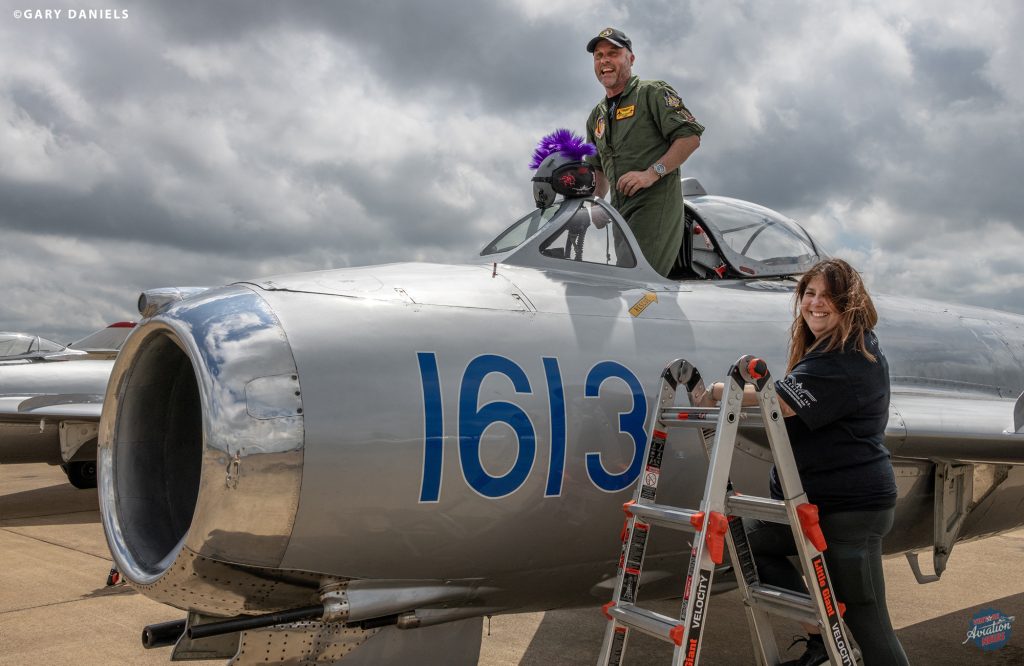
In early March, the pilots and aircraft met at the Classic Jets Aircraft Association Formation Flight Clinic held in Fairhope, Alabama, at the Sonny Callahan Airport (KCQF). Even though each of these pilots is accomplished at formation flying, this first practice of the year to ‘knock off the rust’ was needed. On March 27, all aircraft and pilots gathered at Ball’s hangar at Tyler Pounds Regional Airport (KTYR). The MiGs departed together, practiced maneuvers en route, and arrived in a flight of four Soviet-era fighters right over the top of Barksdale AFB. That was certainly a first, and a bit of showing off had to be done.
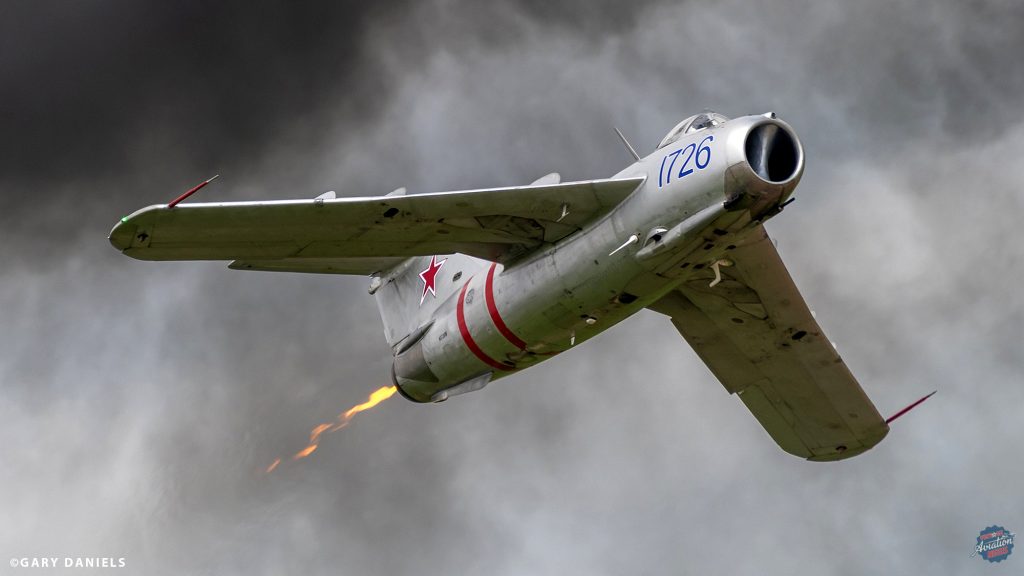
The four MiGs were parked in a giant B-52 hangar, along with other airshow aircraft, on the south end of the never-ending concrete ramp. This is where the FIGHTERJETS INC. Ground Support Team really shined. The team is made up of family and friends with Tina Ball coordinating the million-and-one-details. Sam Swink was acting crew chief for all four aircraft with Tye Oldham assisting. Friday’s performance was cancelled due to rain. But the hangar was hectic with activity on Saturday and Sunday leading up to the 13:30 airshow performance slots both days. Thanks to the hard work of the ground support crew, the aircraft were ready to launch on time.
The order of the flight was Ball as lead in 1611, Gusakov in 1613, Culberson in 1713, and Terfehr in 1726, flying slot. Each day, the four pilots walked the airshow routine several times before it was time to board the aircraft and start engines. The ground crew cheerfully waved as the four MiGs noisily taxied toward the runway and greeted the pilots with hugs on their return. The Barksdale AFB airshow was months of stressful planning for the team. But the success of the flights was exhilarating and a huge relief for all when completed.
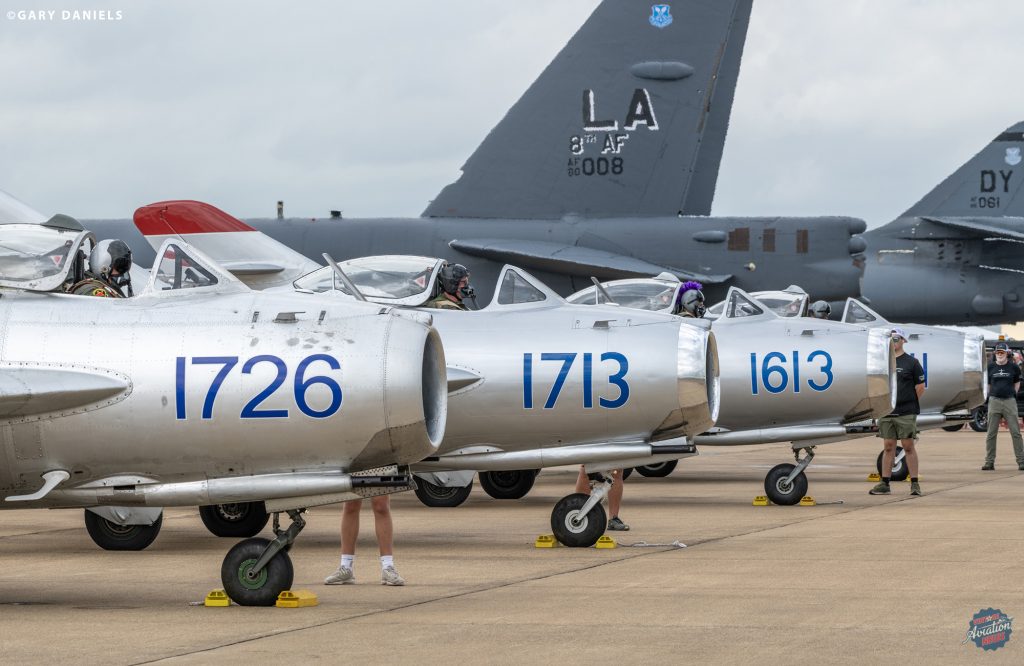
Is there a chance for a history-making five MiG flight at the 2027 Defenders of Liberty Airshow? Ball commented, “A lot can happen in two years. Barksdale is a good option because the aircraft can gather at my hangar in Tyler, and then it’s just a 100-mile hop over to the base. And ground support can easily drive to Barksdale with the equipment and tools needed.” He continued, “But can something of this magnitude happen at any other airshows? Probably not. Having a four or more MiG airshow act may be something that can be duplicated, but it will be very expensive and logistically challenging with many people and moving parts. For example, getting multiple MiGs to the airshow, maintenance issues, weather concerns, team staffing…it’s a monumental effort with a lot of risk of disappointing the spectators.”
With the success of the Barksdale airshow, Ball is immensely proud of the team of pilots and ground support volunteers that came together to make this historic four MiG flight happen. The weekend could only be described as four days of MiG madness. Mission accomplished, comrades!
